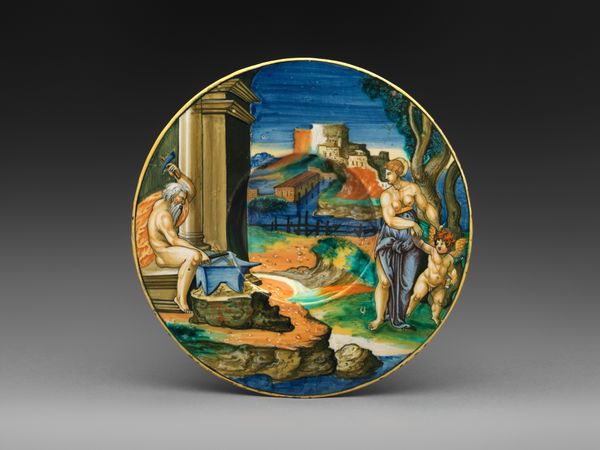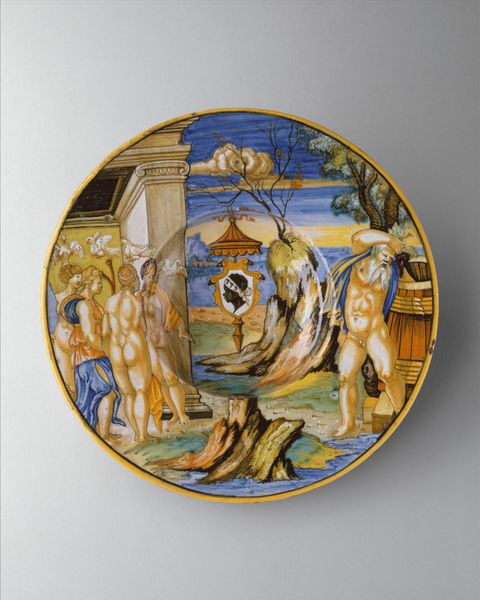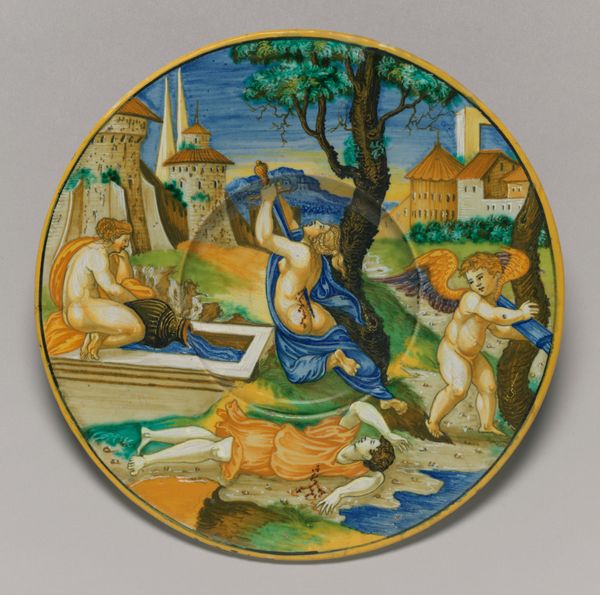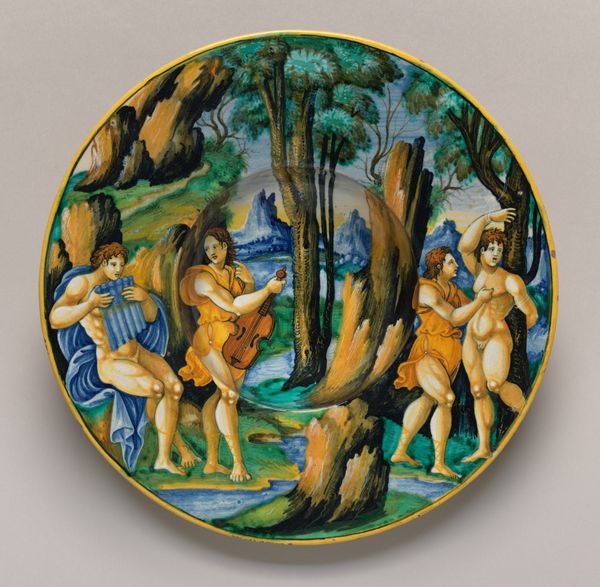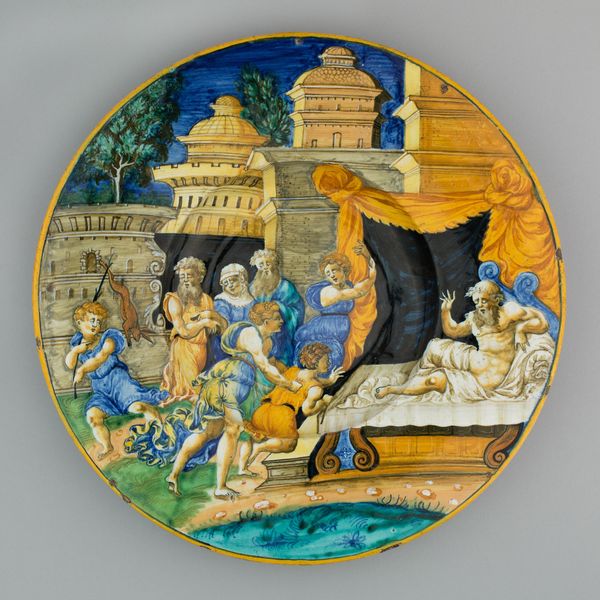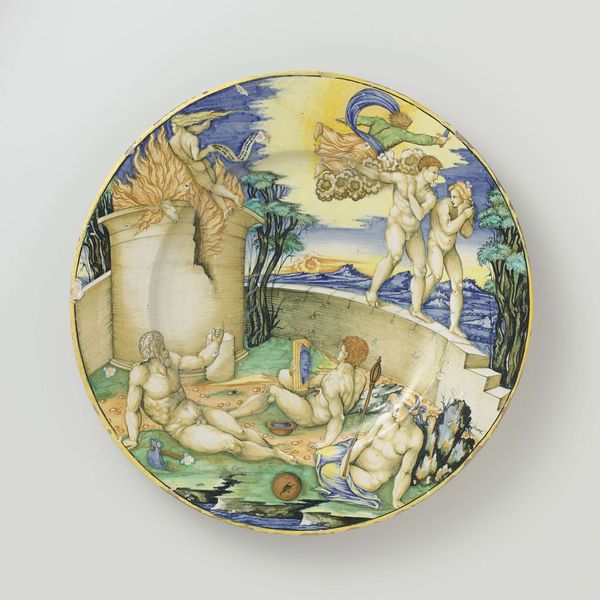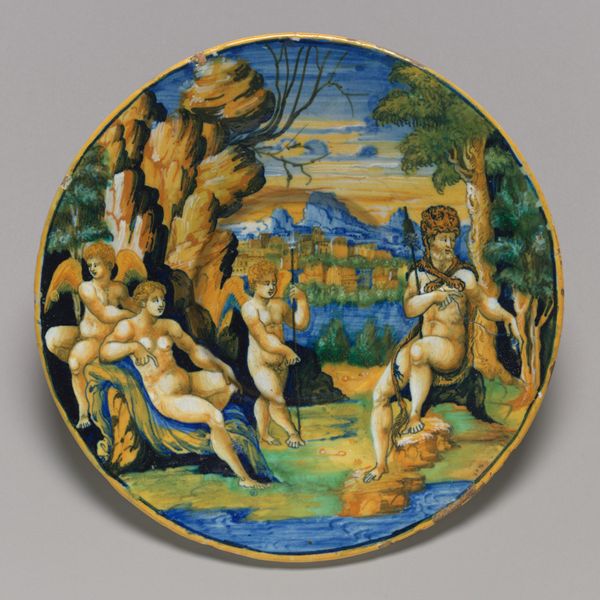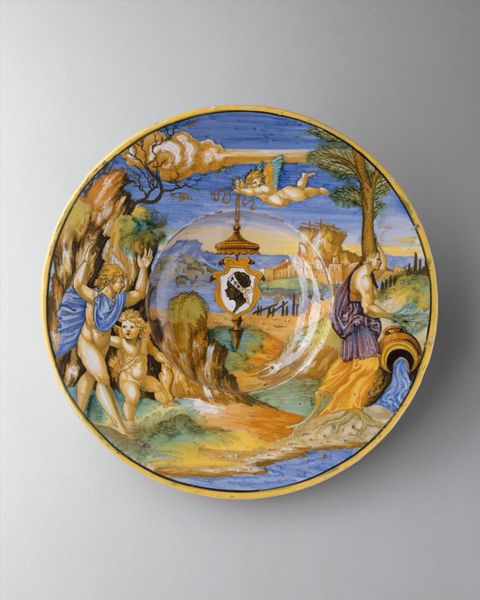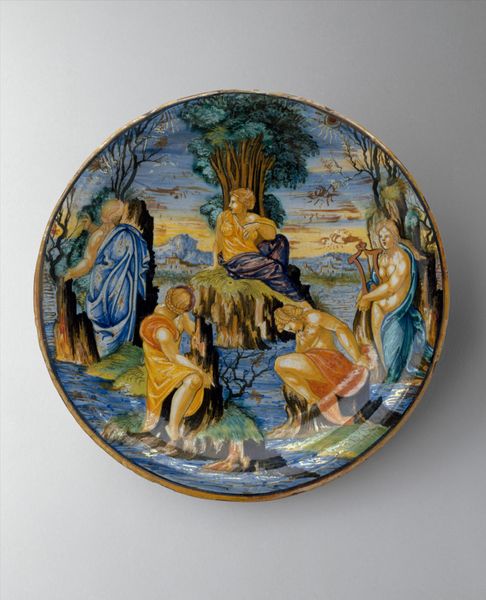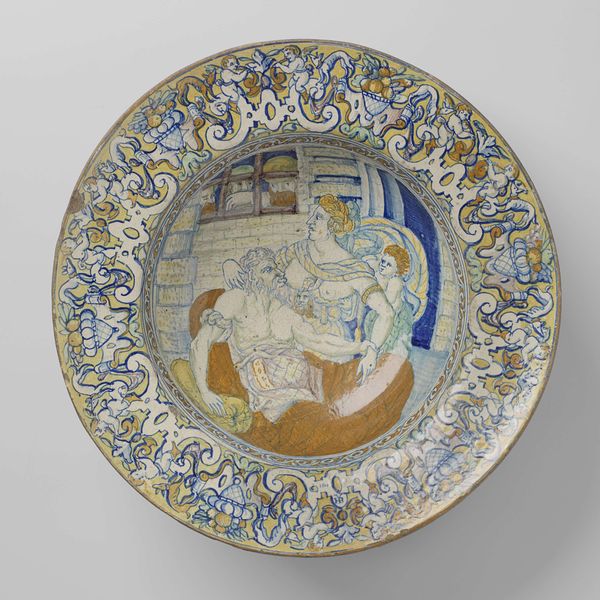
Plate with an allegorical scene of a woman and a putto c. 1527 - 1530
0:00
0:00
ceramic
#
allegory
#
ceramic
#
figuration
#
11_renaissance
#
genre-painting
#
decorative-art
#
italian-renaissance
Dimensions: overall (height by diameter): 3.2 × 19.8 cm (1 1/4 × 7 13/16 in.)
Copyright: National Gallery of Art: CC0 1.0
Curator: This is a maiolica plate by Francesco Xanto Avelli, dating back to around 1527 to 1530. It presents an allegorical scene with a woman and a putto, painted with such delicate detail on ceramic. Editor: My first thought? Dreamy and a little unsettling. The colours are gentle, almost pastel, but there’s something strange in the positioning of the figures. Like two scenes forced to occupy the same small world. Curator: Exactly! Xanto Avelli was a master of these complex narratives. The putto, of course, traditionally signifies Cupid or Love, and the woman seems contemplative. Note the architectural details, which evoke a classical era, yet the treatment of light suggests something more ethereal, more like an Arcadia of the mind. Editor: It is interesting the ceramic serving as canvas… I think of Plato and the symbolic cave. Aren’t we always looking for deeper truth, even reflected on a common dish? This is, to me, the meeting point between the sacred and the everyday. I’m curious, the colours—do they hold symbolic meaning? Curator: It’s very possible. The Renaissance frequently used color symbolically; blue for spirituality, gold for divinity. In this instance, I would suggest the overall use of light and shadow in a delicate way is aiming to convey states of feeling; introspection. Editor: Looking at this putto, so earnest with his multi-coloured wings, I can't help but think of ancient depictions of the winged Eros. There's an innocence, yet also a power hinted at in his stance. What story is unfolding here, I wonder? Curator: Precisely! And the plate itself becomes a metaphor – a container of meaning. Avelli's choice of the maiolica form, typically domestic, elevates the commonplace to a realm of myth. To have this level of sophisticated discourse decorating our home suggests Renaissance domestic life held moments of such richness! Editor: It all points to the cyclical nature of symbols. That which seemed forgotten is reborn through different materials. What better emblem to reflect the perennial quest for beauty than a painted allegory, set upon something simple: a plate? Curator: In the end, this plate, from so many years ago, prompts me to consider art's relationship with storytelling and, specifically, the way a beautiful piece can serve as both a reflection and provocation. Editor: Agreed. This Renaissance piece serves not only as something beautiful to contemplate but rather, it feels like an echo, constantly posing new questions as its viewers evolve through the centuries.
Comments
No comments
Be the first to comment and join the conversation on the ultimate creative platform.
